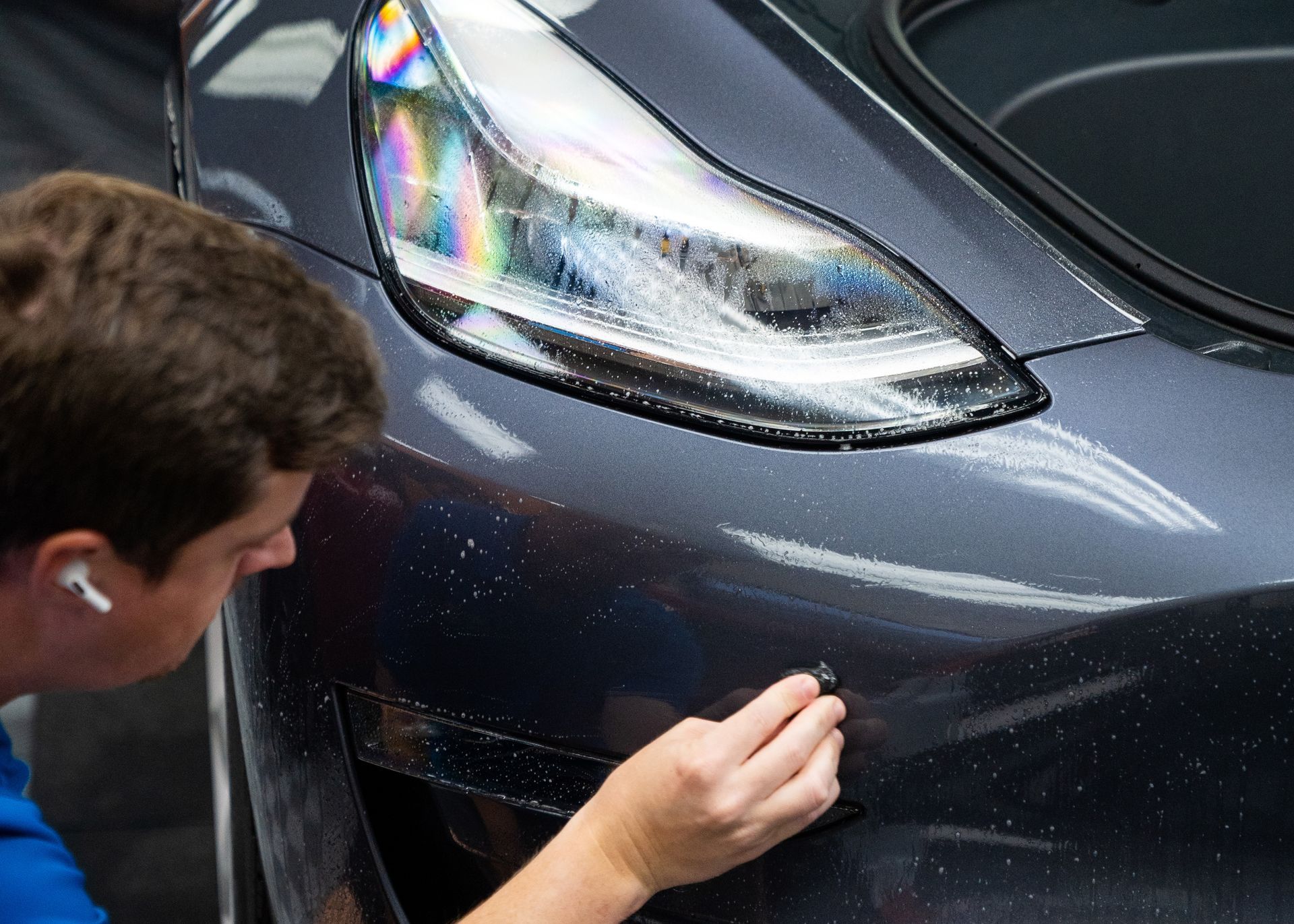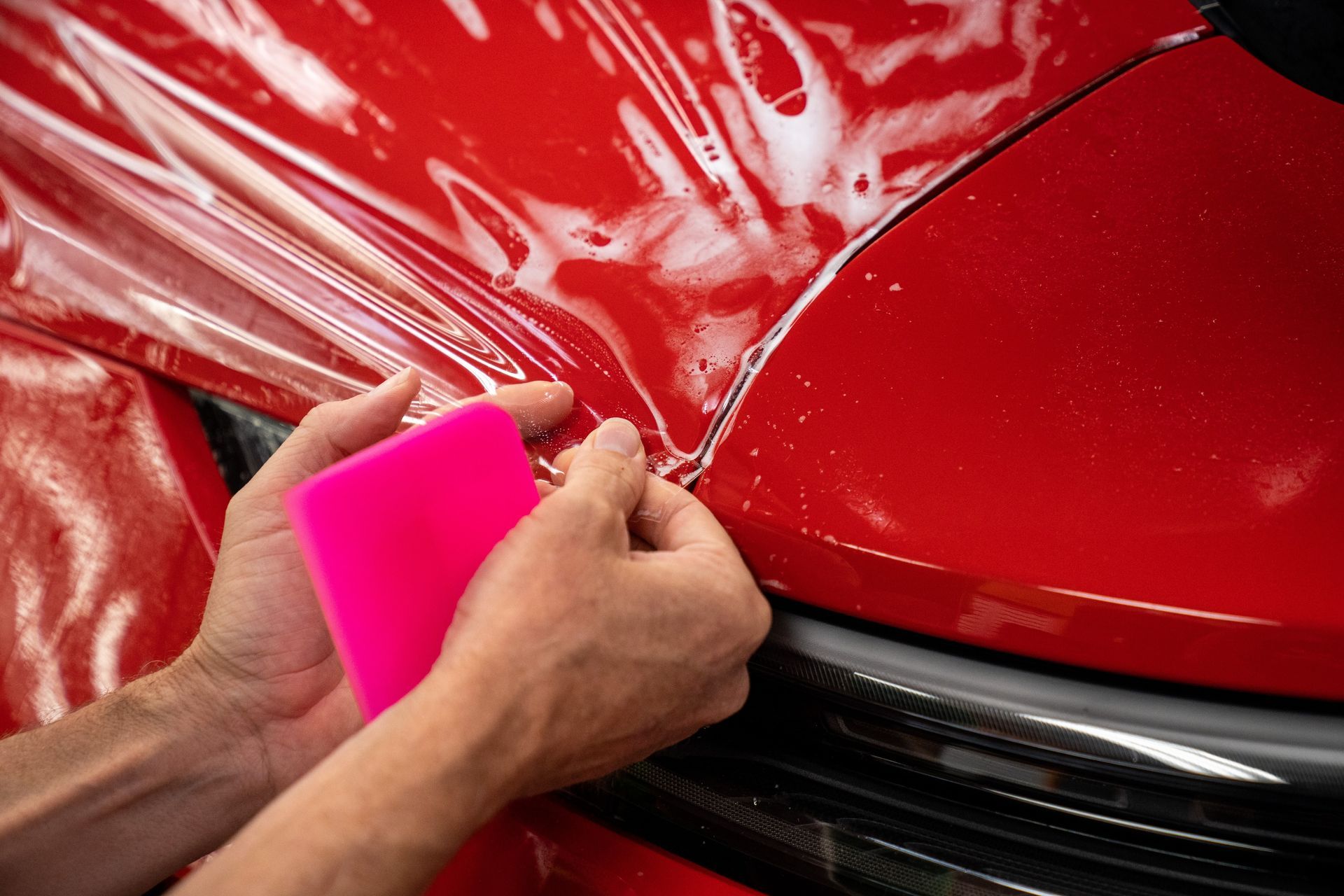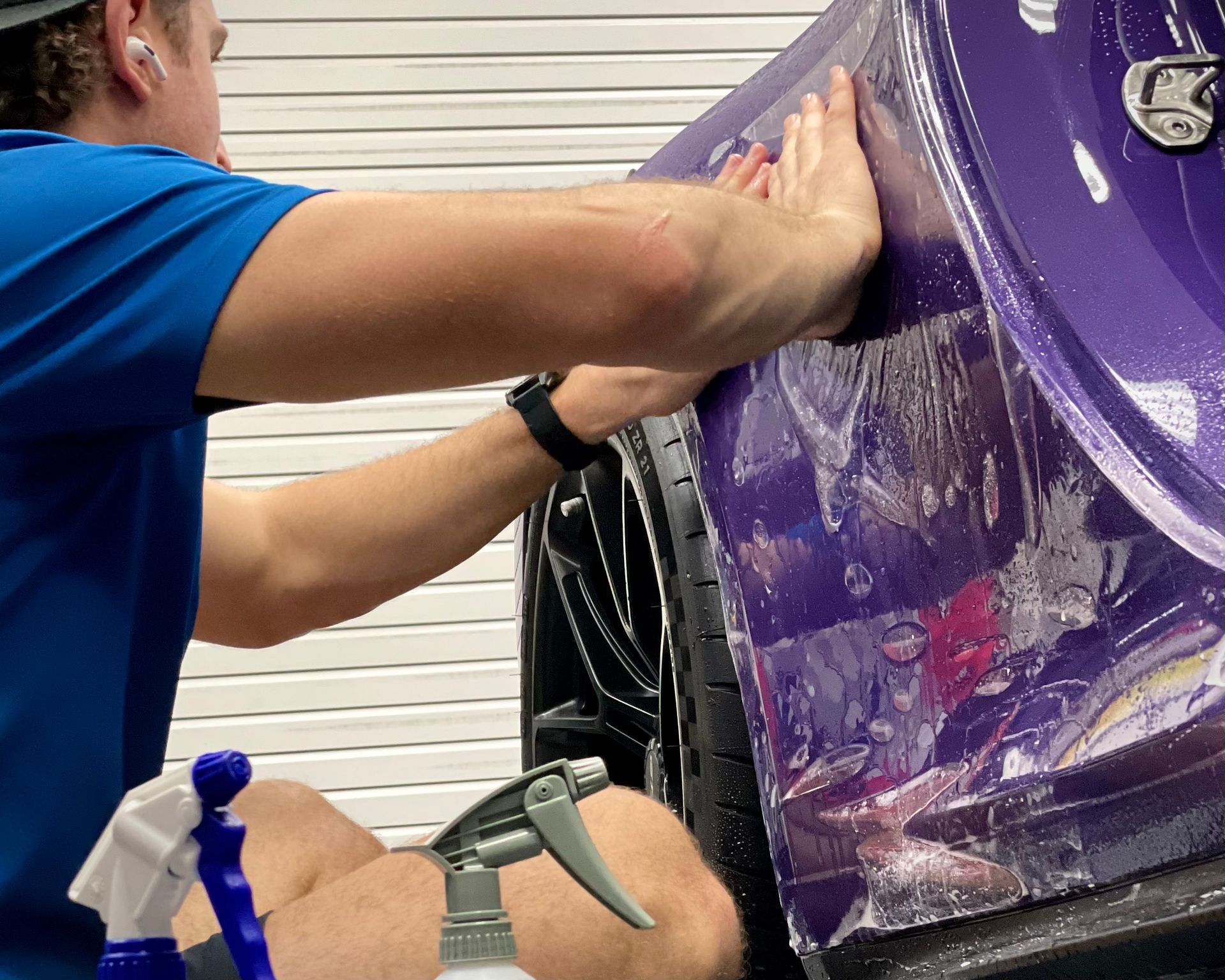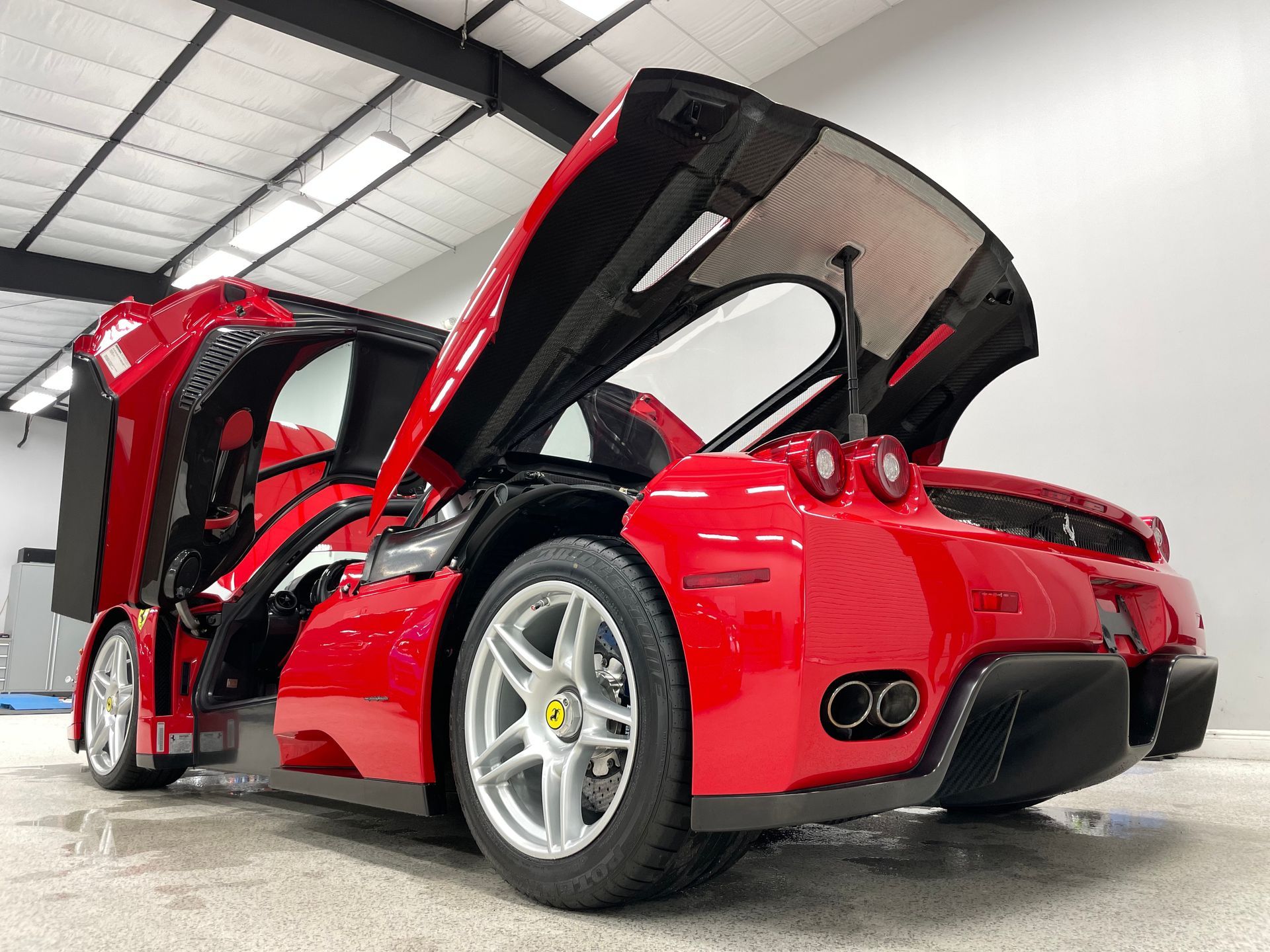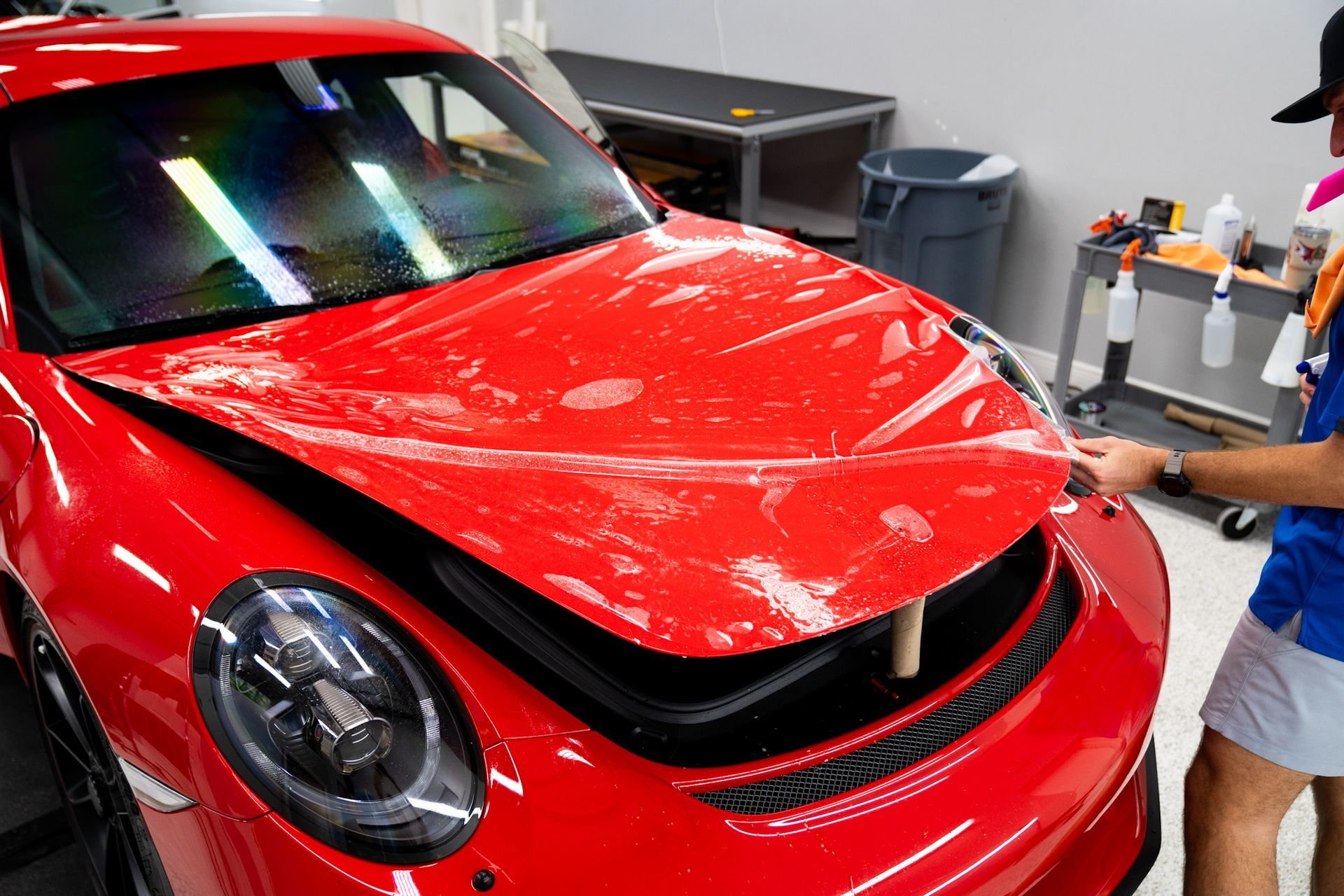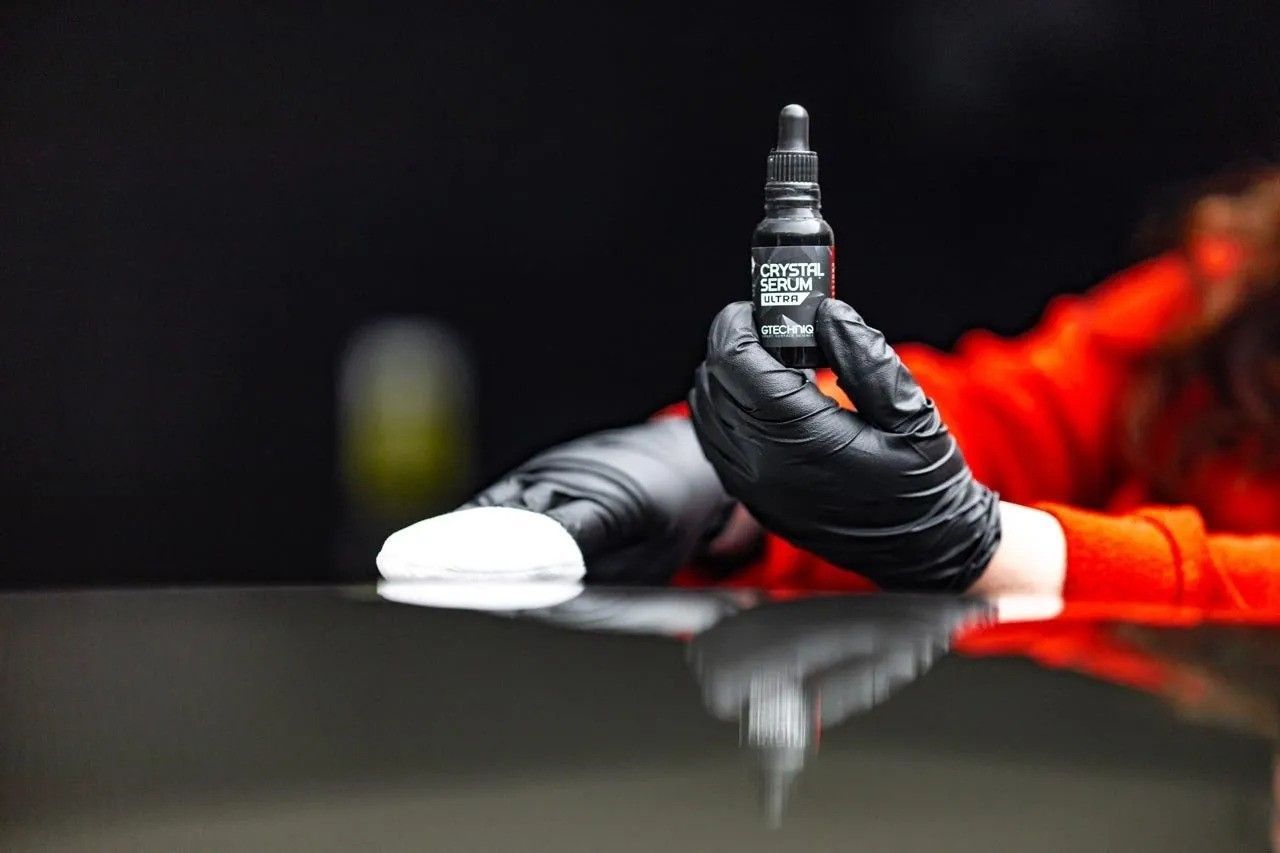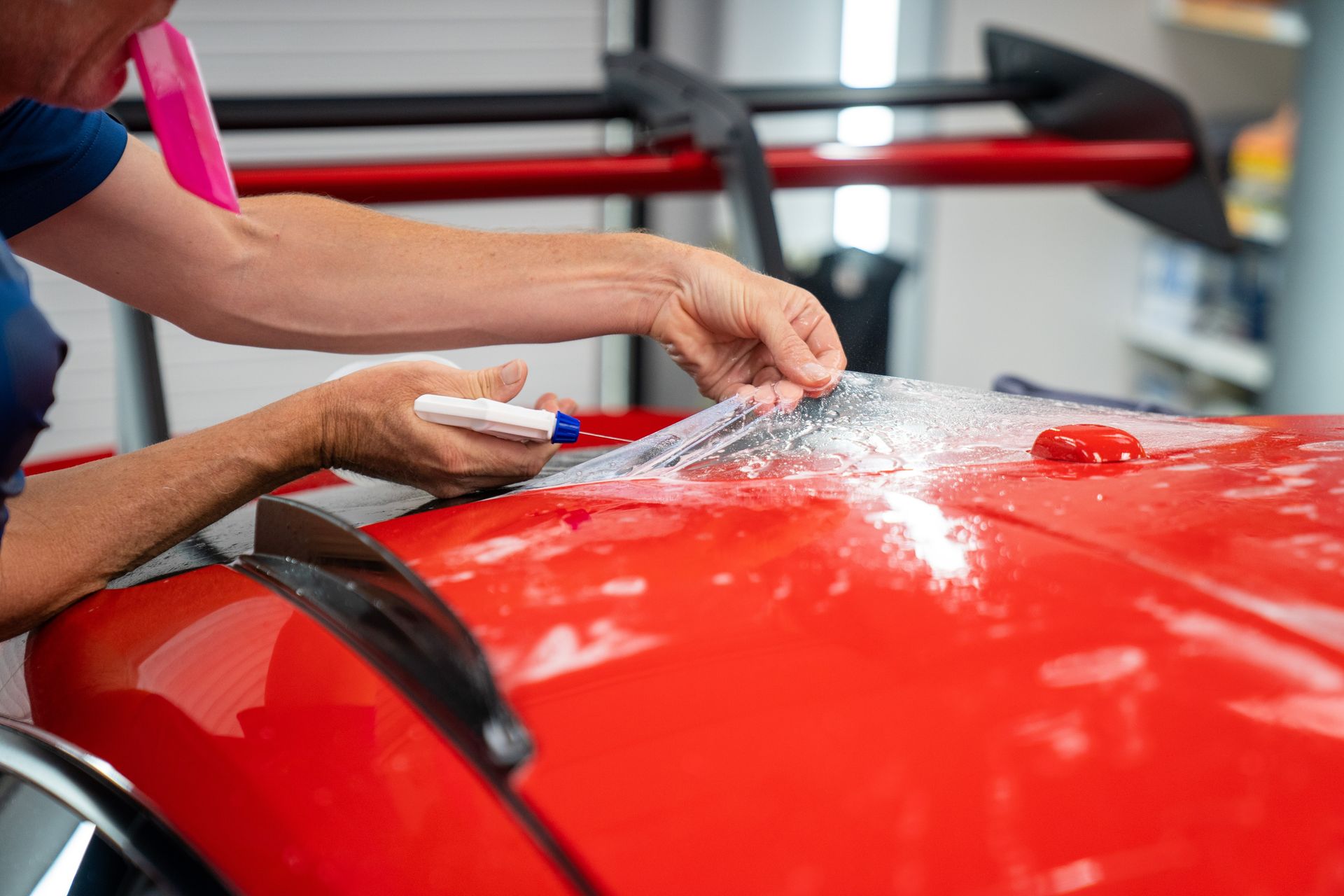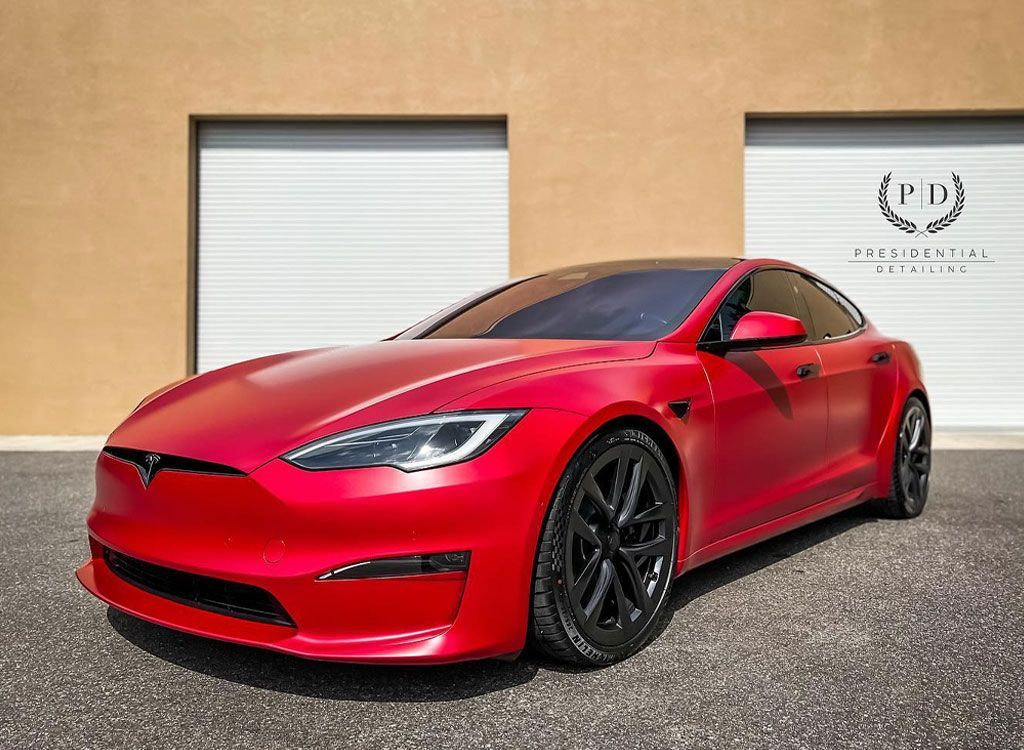PPF: Must-Have Protection to Keep Your Paint Intact in Any Harsh Climate
CALL (813) 723-9679
GET A FREE ESTIMATEWhen you invest in a vehicle, you're likely hoping it will maintain its beautiful finish for years to come. But let’s face it: the road can be rough on paint jobs. From unexpected gravel showers to intense summer sun, harsh elements are lurking everywhere, ready to chip away at your car's shine. That's why Paint Protection Film (PPF) has become an essential armor for car enthusiasts and everyday drivers alike. This thin but mighty layer keeps your car looking new and fresh for longer, no matter what nature throws its way. In this article, we'll explore why PPF is a smart choice to protect your investment and how it can make a world of difference in maintaining your vehicle's beauty against the odds.
Paint Protection Film (PPF) is essential for maintaining vehicle paint in harsh climates because it shields the surface from environmental damage such as UV rays, road salt, and severe weather events that can lead to scratches and degradation. By investing in high-quality PPF, car owners can significantly extend the lifespan of their paint job and maintain their vehicle's appearance amid challenging conditions.
Why PPF Is Essential for Paint Protection
When you think about your car's exterior, it’s easy to overlook the relentless barrage of environmental factors that can chip away at its beauty. Paint Protection Film (PPF) acts as a robust barrier between your vehicle’s surface and the hazards that loom in everyday driving conditions. Imagine navigating through gravel roads or densely populated cityscapes where every turn could lead to unsightly scratches or rock chips. That’s where PPF shines.
One of the fantastic things about PPF is its self-healing properties. Yes, you heard that right! Small scratches and swirl marks can vanish with the right amount of warmth—whether from sunlight or a little heat application. This means that even if you inadvertently brush against a bush or pick up debris on the road, minor imperfections will restore themselves, keeping your vehicle looking immaculate longer.
Additionally, PPF provides crucial protection against UV radiation. You may not realize it, but prolonged exposure to sunlight can cause even the best automotive paint to fade and lose its vibrancy. In fact, high-quality PPF can block up to 99% of UV rays, acting like sunscreen for your car.
Beyond just UV defense, we must consider how PPF withstands different weather extremes. Extreme weather can take a toll on any vehicle's exterior. For instance, harsh winters often come with road salt and de-icing agents that can corrode the surface of unprotected paint. On the flip side, intense summer heat can soften the film itself, making it more susceptible to damage from impacts. This is where investing in higher-quality PPF becomes essential; multi-layer films tend to offer superior durability and resilience against these environmental strains compared to cheaper options.
Studies have shown that vehicles protected with PPF experience up to 50% less paint chipping than those without it, illustrating just how valuable this investment can be in maintaining your paint's integrity over time. Regular maintenance plays an equally significant role in ensuring the longevity and effectiveness of PPF. To maximize the benefits of PPF, routine inspections are necessary—especially during extreme weather intervals—to identify minor issues before they escalate into significant problems. If left unchecked, simple maintenance neglect can lead to bubbling or peeling down the line. Given that high-quality PPF typically lasts between 5 and 10 years with proper care, one might find it worthwhile to incorporate gentle cleaning using pH-neutral products, thereby preventing premature degradation caused by harsh chemicals.
Paint Protection Film is not just about aesthetics; it's about ensuring your investment remains safeguarded against nature's unpredictability while maintaining optimal performance and appearance through innovative protection technology. With this understanding of how protective layers can shield vehicles from various elements, let’s explore the inner workings that make such coatings effective.
How PPF Coating Works
Paint Protection Film (PPF) is more than just a thin layer applied to the surface of your vehicle; it's a meticulously engineered product designed to withstand various environmental challenges. This film comprises multiple layers that serve specific functions, ensuring your car's paint job stays protected without compromising its visual appeal.
The Science Behind PPF
At the forefront is the top layer, typically created using elastomeric polymers. This material is both flexible and resilient, allowing the film to absorb impacts while returning to its original shape. One noteworthy feature of this layer is its self-healing capability. When exposed to heat from sunlight or a warm garage, minor scratches can disappear almost magically, restoring the film's pristine look without any intervention.
Beneath this protective outer layer lies the base layer composed of acrylic adhesive, which is instrumental in securing the film to the vehicle’s paint surface. This adhesive ensures a strong bond while maintaining the option for easy removal down the line if necessary. This design allows PPF to not only adhere firmly but also ensures it doesn’t damage the underlying paint when it’s time to replace or remove it. Imagine having a barrier that guards against stone chips, tree sap, and UV rays while still being completely removable—that’s precisely what high-quality PPF offers.
Weathering the Elements
Aside from protecting against scratches and chips, PPF also stands up remarkably well against extreme weather conditions. It can repel heavy rainfall and even snow, making sure that moisture doesn't compromise its integrity. During those sweltering summer days, this protective film shields your car's paint from harmful UV rays that can lead to fading over time.
In fact, high-quality PPF can block up to 99% of harmful UV rays, allowing your vehicle’s appearance to endure many seasons without significant wear! For optimal effectiveness, however, regular inspections of your PPF are crucial. Routine checks allow you to spot any signs of wear or damage early on, ensuring that any issues can be addressed before they become costly repairs. Understanding these aspects will help you value the importance of such protection against harsh elements while we explore how beneficial it truly is in challenging climates.
Benefits of Using PPF in Harsh Climates
Harsh climates present a unique set of challenges for vehicles, and PPF stands as a sturdy sentinel against these adversities. The protective qualities of PPF significantly mitigate the adverse effects caused by UV radiation, extreme temperatures, and road debris. This is crucial because we often underestimate how much our cars suffer from the elements, especially with temperature fluctuations that affect paint integrity.
- Protection Against UV Radiation: A staggering 80% of paint fading stems directly from UV exposure. This is where PPF shines—literally! It can block up to 99% of harmful UV rays that not only fade but also degrade your vehicle's paint over time. Imagine driving into the sun every day with nothing shielding your car; over time, that relentless exposure will wear down even the best paint jobs. With PPF wrapped around your vehicle, worrying about fading becomes a thing of the past. Think of PPF as sunscreen for your vehicle, preserving its luster long after those summer roads are behind you.
- Shielding from Road Debris & Salts: Now let's talk about the gravel and salt that seem to appear out of nowhere in winter months. Winter roads often accumulate layers of salt to combat ice, but this very salt can create corrosion on your car’s underbelly and chip away at that immaculate paint job. Here's where PPF acts like a superhero shield; it serves as an effective barrier preventing these dangerous elements from contacting and damaging the underlying paint. Additionally, think about everyday driving in urban settings where loose stones or debris might get kicked up on the road. The film absorbs these impacts before they reach your paintwork, helping to ensure that what may have been a nasty scratch or dent now remains merely a minor inconvenience.
- Resilience Against Extreme Temperatures: From severe cold that freezes liquids to blistering heat that could warp materials, temperature extremes can be brutal on vehicles. When exposed to excessive heat, PPF can soften slightly but maintains its integrity under normal conditions. Conversely, during colder periods, it remains flexible but may stiffen if temperatures drop too low. This adaptive characteristic helps prevent edge peeling or cracking—common issues with lower-quality films which aren't designed for harsh climates.
After understanding these advantages, you might start to consider the financial implications of such comprehensive protection for your vehicle. Let's examine what goes into the pricing aspect next.
Cost of PPF Installation
Investing in PPF isn't just about the material itself; it's also crucial to consider the installation costs. On average, high-quality PPF installations for full vehicle coverage can range between $2,000 and $7,000. This broad spectrum accounts for various factors such as the type of film used, the complexity of the vehicle’s surfaces, and even geographical location.
Luxury vehicles often see installation prices that exceed this range due to their intricate designs and larger surface areas that require more material. For those who may only want partial protection—perhaps just focusing on high-impact areas like the hood or bumpers—the costs are relatively lower, typically ranging from $600 to $2,000. This approach is often a smart choice for everyday drivers who want protection without fully committing to a wrap. It's fascinating how investing in a Tesla Model 3, for example, might require about $5,000 for a complete PPF wrap. However, over five years, this protection can translate into an impressive preservation value of around $8,000. This kind of return on investment is hard to overlook.
When weighing these costs against potential damages—such as scratches from road debris or discoloration from UV rays—it becomes clear that good maintenance is essential post-installation. A poorly applied film or one that isn’t properly cared for can lead to issues like peeling or yellowing, which could undermine your initial investment. Therefore, knowing how to maintain your PPF after it’s installed is critical, ensuring that you maximize its lifespan and effectiveness.
Factors Influencing Cost
A variety of elements contribute to the final cost of PPF installation, which can significantly impact your budget:
- Coverage Area: The broader the area covered by PPF—full vehicle versus partial areas—the higher the cost.
- Type of Film Used: Standard films come at a lower price point compared to advanced options with self-healing properties.
- Quality of Installation: A professional installer is often worth the additional cost as they ensure proper adhesion and durability compared to DIY caveats.
- Vehicle Size and Complexity: Larger or more complex vehicles not only use more material but also may take longer to wrap, increasing labor costs.
Having explored the costs associated with this essential protective measure, let’s now turn our attention to effective strategies for application and ongoing care to preserve your investment.
Application and Maintenance Tips
Proper application and maintenance of PPF can significantly extend its lifespan. Begin with surface preparation because a clean vehicle is essential. Use a pH-neutral car wash soap to remove dirt, grease, and contaminants. This step guarantees that the film adheres effectively, creating a smooth surface free of any debris that might compromise the installation. It’s similar to painting a wall; if you don’t prep the surface properly, the results will be less than satisfactory.
Once you’ve prepared the surface, move on to the application phase. Carefully align the PPF and apply it using a squeegee to push out any air bubbles. The key here is patience. Rushing this part could lead to creases or imperfections that not only look unappealing but also hinder the film's protective capabilities. Think of it like laying down adhesive wallpaper—alignment makes all the difference in achieving a pristine finish.
Harnessing the heat gun during this phase adds another layer of finesse. Apply mild heat to activate the film’s adhesive properties further and enhance its self-healing abilities. When minor scratches occur, a gentle warmth will allow the film to mend itself, which is one of PPF's standout features. Transitioning into maintenance, routine washing of your vehicle is crucial—aim for every 1-2 weeks—to maintain clarity and effectiveness. During these washes, stick to pH-neutral cleaning products that won't harm the film's integrity. Harsh chemicals can degrade your PPF over time, much like corrosive substances erode metal.
In addition to regular washing, keep an eye out for any signs of edge lifting or damage. If you notice any loose areas, they should be addressed immediately to avoid larger issues developing down the line. Regular inspections allow for early detection of potential problems, which can prevent costly repairs later on. Remember, even high-quality PPF may show wear due to environmental factors such as UV exposure or harsh weather conditions. By taking proactive measures and being attentive to your film's condition, you can ensure it serves its purpose for years to come. Next, we’ll explore the important features you should consider when selecting the perfect protective film for your unique vehicle.
Choosing the Best PPF for Your Vehicle
Not all Paint Protection Films (PPF) are created equal, and a mindful selection process can significantly influence how well your vehicle withstands the elements over time. When investing in PPF, consider various factors tailored to your driving habits and the climate conditions that prevail in your area. This isn't just about aesthetics—it's about ensuring durability and protection from harsh environments that can dull and damage your paint job.
Key Factors to Consider
When selecting a PPF, your choice should revolve around three primary pillars: material quality, thickness, and warranty coverage. First off, material quality is paramount. Opting for multi-layered films enhances durability and scratch resistance. Lower-quality single-layer films may save money upfront but often lead to greater costs in the long run when they break down or show wear sooner than expected. Imagine protecting your vehicle with a coat designed to last through the years instead of replacing an inferior product every few seasons.
Next, let’s talk about thickness. In harsher climates where UV rays blister paint or harsh winters introduce road salt and debris, thicker films—typically within the 8-10 mil range—provide superior protection. This additional thickness absorbs impacts and resists environmental stressors. Think of it like wearing a thick winter coat versus a light sweater; one offers much more protection when the weather turns severe.
Last but not least, pay close attention to warranty details. A reliable product will be backed by robust warranty options—look for terms between 5 and 10 years. This assurance reflects confidence in the coating’s longevity against yellowing and peeling. As a final step before making your decision, ensure that you have a certified professional handle the installation. Proper installation maximizes benefits, enhances appearance, and ensures effective adherence to the paint surface.
By thoughtfully weighing these critical elements, you can guarantee that your vehicle stays immaculate even under challenging weather conditions. The right PPF acts as a shield, preserving both aesthetic appeal and resale value for years to come. Ultimately, investing in high-quality PPF is not just about today’s protection; it's about securing the future integrity of your vehicle's paintwork in any climate.
Top-Rated Paint Protection Film Service in Tampa, FL
Presidential Automotive Detailing in Tampa, FL, is your go-to destination for premium paint protection film services. Our expert team applies PPF with precision, ensuring your vehicle remains safe from rock chips, scratches, and environmental damage while maintaining its sleek appearance. Protect your car's paint with a nearly invisible shield that enhances its shine and keeps it looking pristine for years to come. Drive confidently knowing your vehicle is guarded against the everyday elements that could compromise its finish.

